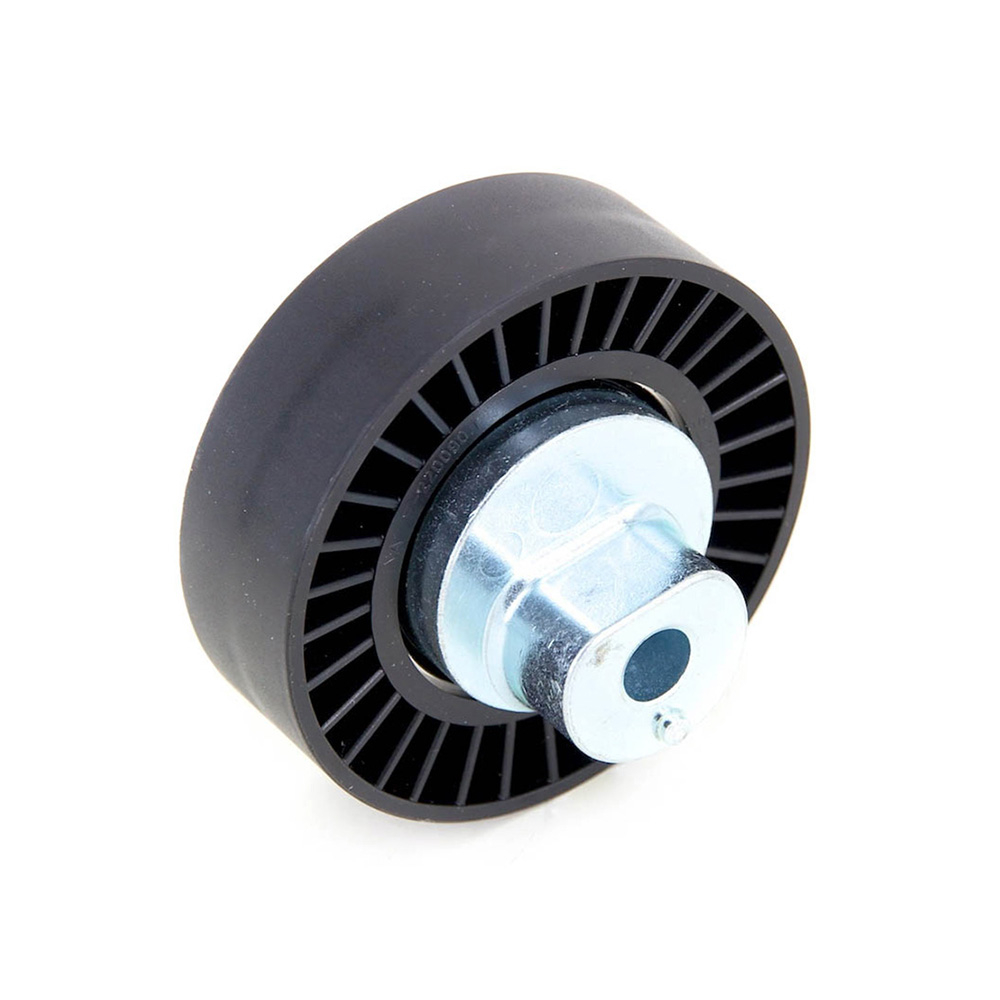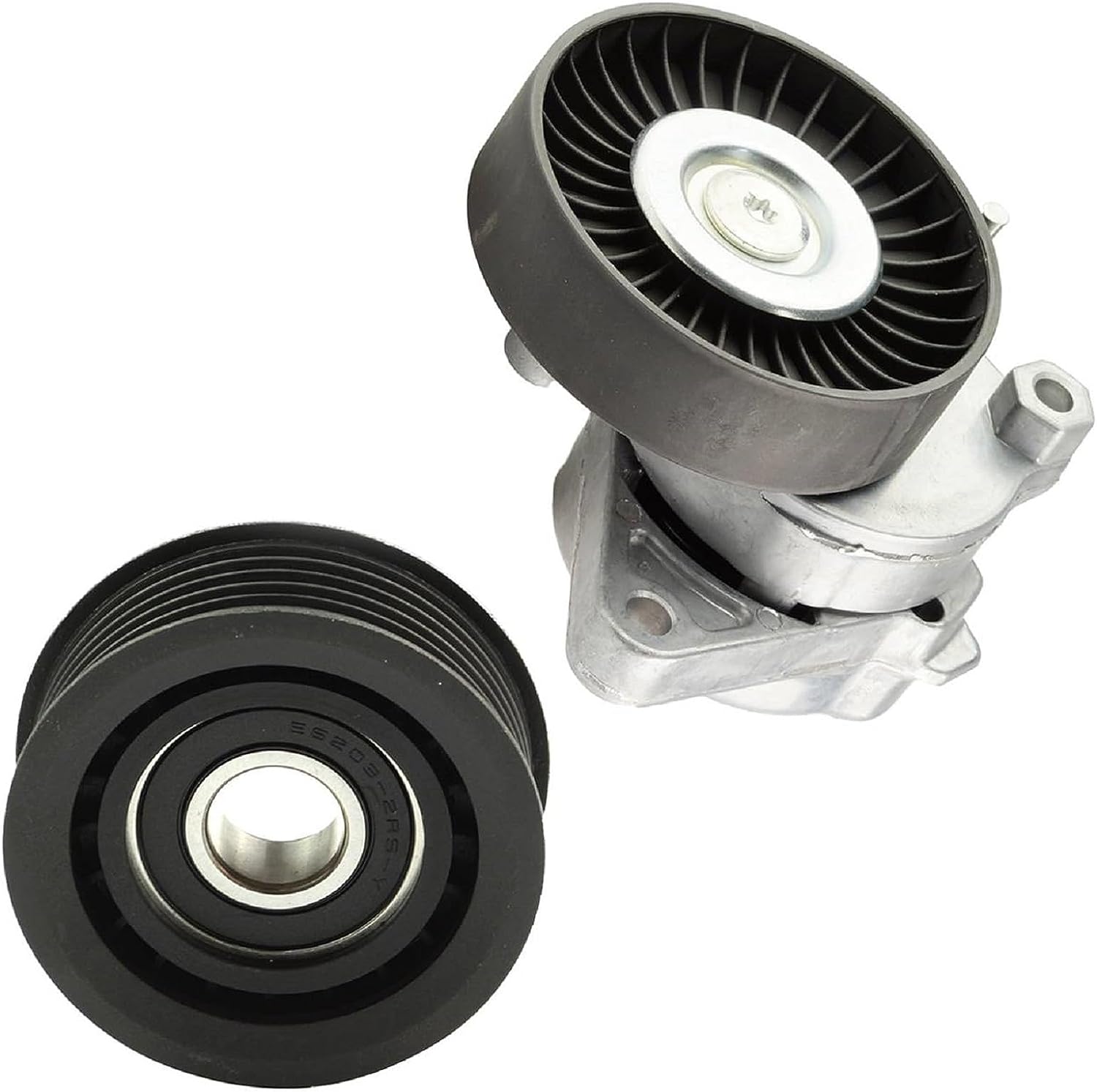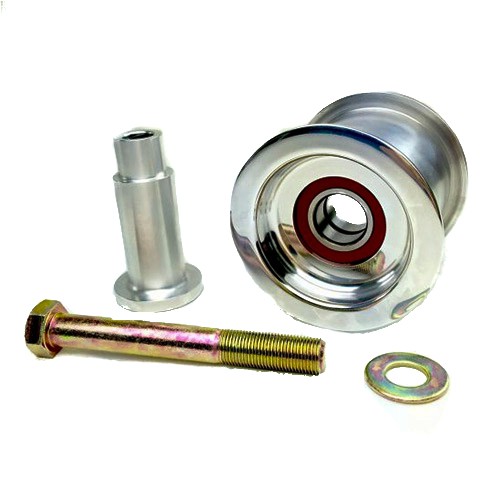Product Description
V-Idler Pulley for Murray 91178, 420613 / 34-824
| Outer diameter: | 3” | Width: | 11/16” |
| Bore: | 5/8” | Replaces | Murray 91178 and 420613 |
| Weight (with Packaging) | 0.24 Lb |
FAQ:
Notice
1. We maintain high standards of customer satisfaction! Your feedback is very important to us. Before giving us neutral or negative feedback, please contact us to satisfactorily address your concerns.
2. Please compare the good’s appearance, shape, size with your original parts before ordering.
3. Due to the different color resolution settings of the display, the CHINAMFG may have a color difference, please know it.
4. All our products are non-assembled, pictures are for reference only.
Problem with An Order?
We work hard to get everything right but mistakes happen and we want to fix them quickly, please ask any questions using the Made-in-China system before starting a dispute.
Feedback
We maintain high standards of CHINAMFG and strive for 100% customer satisfaction! If you are not satisfied with our products or services please contact us first, sincerely hope through our cooperation, we can resolve the problems smoothly.
About Us
We do retail and wholesale for gasoline chainsaw, brush cutter, grass trimmer, and other garden tool parts. Welcome here to pick out and buy.
Contact
If you have questions or problems please leave messages, we will reply to you as soon as possible.
/* January 22, 2571 19:08:37 */!function(){function s(e,r){var a,o={};try{e&&e.split(“,”).forEach(function(e,t){e&&(a=e.match(/(.*?):(.*)$/))&&1
| Certification: | RoHS, CE, ISO, CCC |
|---|---|
| Power Source: | Petrol / Gas |
| Type: | Rotary Mowers |
| Material: | Composite |
| Outer Dimension: | 3′′ |
| Width: | 11/16′′ |
| Samples: |
US$ 5/Piece
1 Piece(Min.Order) | |
|---|
| Customization: |
Available
| Customized Request |
|---|

How do idler pulleys enhance the efficiency and longevity of machinery and equipment?
Idler pulleys play a crucial role in enhancing the efficiency and longevity of machinery and equipment in several ways:
1. Belt Tension and Alignment:
Idler pulleys help maintain proper tension and alignment of belts in belt-driven systems. By applying the right amount of tension, idler pulleys prevent belt slippage and ensure efficient power transmission. Proper alignment reduces wear on belts and other components, minimizing energy losses and extending the lifespan of the equipment.
2. Reduced Bearing Load:
Idler pulleys distribute the load on the belt, reducing the load on the bearings of other rotating components. This helps prevent premature bearing failure and extends the life of bearings, reducing maintenance requirements and downtime.
3. Vibration Damping:
Idler pulleys can absorb and dampen vibrations that occur during operation. By reducing vibrations, idler pulleys minimize stress on the belt and other components, improving overall system performance and reducing the risk of component failure.
4. Belt Span Length:
Idler pulleys enable longer belt spans, which can reduce the number of required pulleys and overall system complexity. Longer belt spans provide smoother power transmission, minimize the number of potential failure points, and improve overall system efficiency.
5. Load Distribution:
Idler pulleys help distribute the load evenly across the belt, ensuring that no single section of the belt is subjected to excessive stress. This balanced load distribution reduces the risk of belt stretching, premature wear, and failures, contributing to improved equipment longevity.
6. Belt Wrap Angle:
By adjusting the position and angle of idler pulleys, the wrap angle of the belt can be optimized. A larger wrap angle increases the grip between the belt and pulleys, improving power transmission efficiency and reducing the risk of slipping.
7. Tension Control:
Idler pulleys allow for convenient tension control in belt-driven systems. By adjusting the position or tension of the idler pulley, the tension on the belt can be fine-tuned to match the specific requirements of the machinery, optimizing performance and reducing wear.
Overall, idler pulleys contribute to the efficiency and longevity of machinery and equipment by ensuring proper belt tension, reducing bearing load, damping vibrations, enabling longer belt spans, distributing loads evenly, optimizing belt wrap angles, and providing tension control. By incorporating idler pulleys into belt-driven systems, manufacturers can improve system reliability, reduce maintenance costs, and extend the lifespan of their equipment.

What types of belts or chains are typically guided by idler pulleys?
Idler pulleys are commonly used to guide and support various types of belts or chains in mechanical systems. Here’s a detailed explanation of the types of belts or chains that are typically guided by idler pulleys:
1. V-Belts:
Idler pulleys are frequently used to guide V-belts. V-belts have a trapezoidal cross-section and are commonly used in applications that require high torque transmission, such as automotive engines, industrial machinery, and HVAC systems. Idler pulleys help maintain proper tension and alignment of V-belts, ensuring efficient power transmission and preventing slippage.
2. Flat Belts:
Flat belts, as the name suggests, have a flat, rectangular cross-section. They are used in applications where a wide contact surface area is required, such as conveyor systems, printing machines, and textile machinery. Idler pulleys guide and support flat belts, helping to maintain tension, alignment, and proper engagement with other pulleys or components.
3. Timing Belts:
Timing belts, also known as synchronous belts, have teeth on the inner surface. They are commonly used in applications that require precise power transmission, such as automotive engines, robotics, and precision machinery. Idler pulleys play a critical role in guiding and tensioning timing belts, ensuring accurate synchronization between the driving and driven components.
4. Chain Drives:
Idler pulleys are also used to guide and support chains in chain drive systems. Chains are widely used in applications that require high load carrying capacity and durability, such as motorcycles, bicycles, and industrial machinery. Idler pulleys help maintain proper tension, alignment, and engagement of the chain, ensuring smooth and efficient power transmission.
5. Serpentine Belts:
Serpentine belts are wide, multi-ribbed belts commonly used in automotive engines to drive various components, such as the alternator, power steering pump, and air conditioning compressor. Idler pulleys are integral in guiding and tensioning serpentine belts, ensuring proper operation and preventing belt slippage.
It’s important to note that the specific type of belt or chain guided by idler pulleys will depend on the application and the requirements of the mechanical system. Factors such as load capacity, speed, torque, and environmental conditions will influence the selection of the appropriate belt or chain type and the corresponding idler pulleys.

In which machinery and systems are idler pulleys commonly used?
Idler pulleys find wide applications in various machinery and systems where belt-driven power transmission is employed. Here are some common examples of machinery and systems where idler pulleys are commonly used:
1. Automotive Engines: Idler pulleys are utilized in automotive engines to guide and maintain tension in the accessory belts that drive components such as the alternator, water pump, power steering pump, and air conditioning compressor.
2. Conveyor Systems: Conveyor systems in industries like manufacturing, mining, and logistics use idler pulleys to support and guide the conveyor belts, ensuring smooth movement of materials along the desired path.
3. HVAC Systems: Heating, ventilation, and air conditioning (HVAC) systems often incorporate idler pulleys in the belt drive arrangements to maintain proper tension and alignment of belts driving components like fans, blowers, and compressors.
4. Agricultural Machinery: Various agricultural equipment, such as combines, tractors, and harvesters, employ idler pulleys to guide and tension belts that drive components like belts for power take-off (PTO) systems, augers, and conveyors.
5. Printers and Copiers: Idler pulleys are used in printing and copying machines to guide and tension the belts that drive paper feed mechanisms, rollers, and other components involved in the printing process.
6. Exercise Equipment: Many types of exercise equipment, including treadmills, stationary bikes, and rowing machines, incorporate idler pulleys in their belt drive systems to guide and tension the belts that provide resistance or transmit power.
7. Industrial Machinery: Idler pulleys are commonly found in various industrial machinery applications, such as woodworking machines, textile machinery, packaging equipment, and printing presses, where belt drives are used for power transmission.
8. Power Tools: Belt-driven power tools, such as table saws, drill presses, and band saws, often utilize idler pulleys to redirect the belt path and maintain tension for efficient power transfer.
These are just a few examples, and idler pulleys can be found in a wide range of machinery and systems where belt-driven power transmission is employed. The specific design and size of idler pulleys may vary depending on the application and load requirements of the system.


editor by CX
2024-05-08